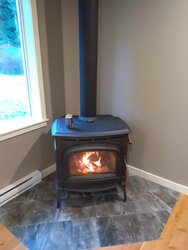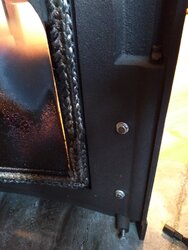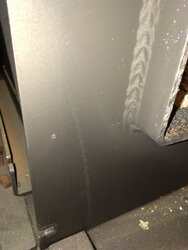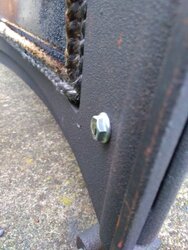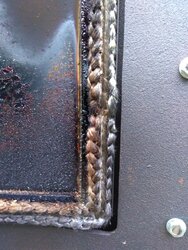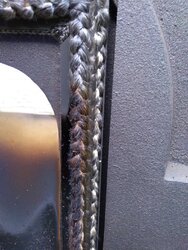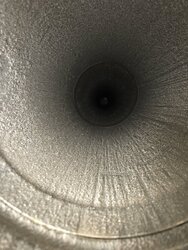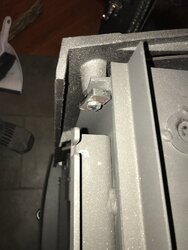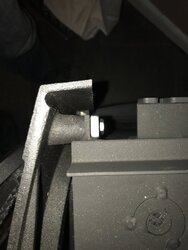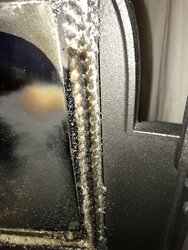Well, here's my first post. My wife and I are the proud new owners of an Ashford 30.1, and for the most part, love it. We agonized for months (we don't do anything without months of research!) over it and the Alderley T6. She really wanted the cast iron, I wanted a big stove for long burn times. Through numerous twists of fate, ie.,production issues at PE, and at BK, we found an Ashford in stock at a shop in northern BC and had a friend deliver it to the Island(he was coming for a visit anyway).
Although skeptical about catalytic stoves, we were convinced (through much reading of this forum/thread) that the ability to turn the Ashford to a simmer was a big plus, and the price of a cat every three for four years pales in comparison to $600 power bill we got the other day... and all my wood is free!
The room the stove is installed in is only about 350 square feet, but the rest of the house is sprawled over 2400 square feet. We've been burning for seven days now and the "stove room" doesn't get much above 23C, yet the rest of the house stays at a constant 20/21C - even the back bedrooms and bathroom stay at 20C and that's with overnight temperatures of -5C to +6C during the day. So far I've only been burning dry d-fir branches of 1.5 to 3 inches in diameter and have no trouble getting 14 hour burn times - can't wait to get into the big stuff!
Now for the "not so great". We have "smoke smell". It appears, like a few other owners on here, that it's coming from the top left/hinge side of the door. It s
eems to happen after I turn the stat down, usually to medium, the flames disappear and char is finished. This annoys me greatly. I love the smell of smoke on my salmon, charcuterie, and my bacon, but NOT in my house. I've burned wood for many years and have never had the smell of smoke in the house, even when reloading.
So, this is what I've done so far. I've read all 1308 posts of part 1 and 594 of part 2 of this thread to help me trouble shoot this problem, so I've done all the tests everyone suggests, check draft, add chimney height to 17 feet, paper pull test, I've even turned on all the exhaust fans(about 590 cfm total) in the house and can't get it to back draft.
I shut the stove down yesterday and removed the cast cladding and looked for bad welds like one owner had here. What I did find was one of the bolts that attaches the door "limiter" was too long and was hard against the front inner plate of of the stove, pushing the cast front on the hinge side out a bit. I've cut the end of the bolt off past the nut. I inspected the gasket carefully and it appears that smoke may have been seeping past the gasket on the hinge side - where the knife edge of the firebox presses on the gasket is shiny silver/grey, on the hinge side there is a hint of brown for the length of the gasket on the hinge side. I've also adjusted the door a bit tighter on the latch side, but unfortunately there is no adjustment on the hinge side(unless I grind the mounting bosses off a bit!). Put everything back together. I've run two loads since yesterday and I STILL have the damn smoke smell.
The best solution I've seen so far is replacing the gasket so it doesn't look like the dogs breakfast that it does now, and maybe "upgrade" the gasket like
@kf6hap did with the Rutland gasket. But really, should I have to do this on a new stove?
I've got pictures if anyone's interested.
Steve


